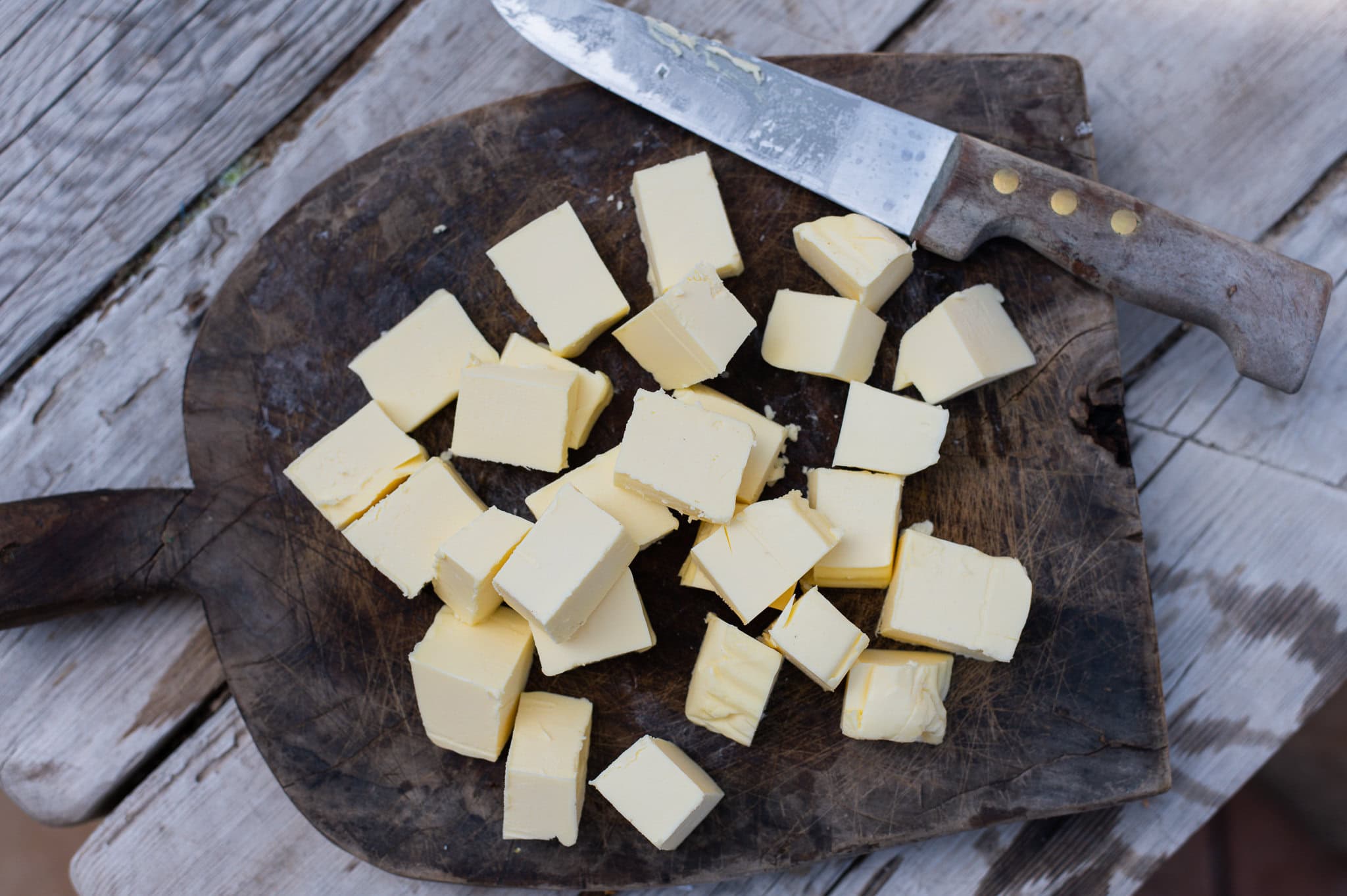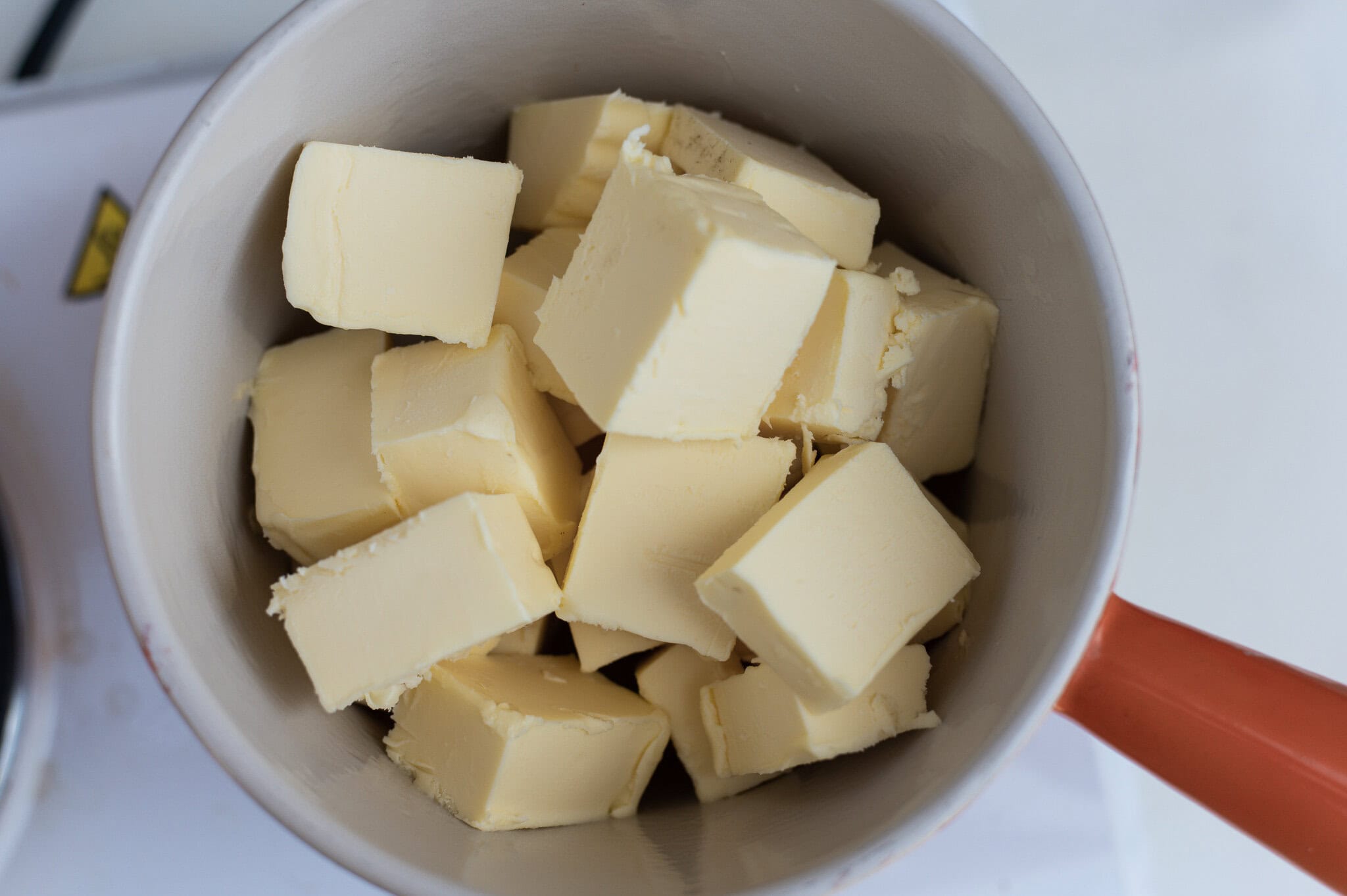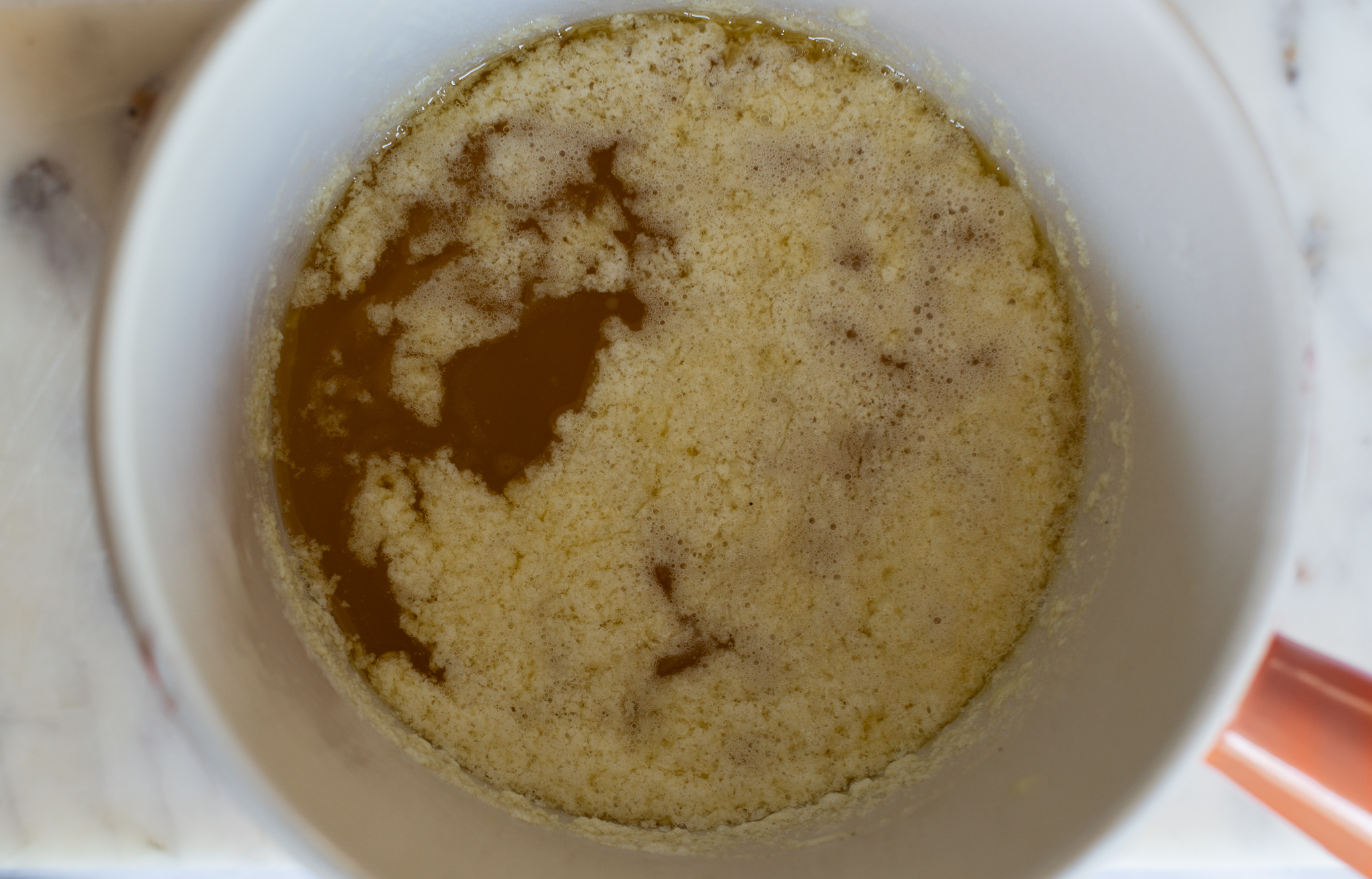
About this recipe
Ghee is a staple in ayurveda so it’s always good to know how to make your own that way you can keep an eye on the quality and save a few bucks!
Ghee is sattvic, increases agni, helps to move āma to be detoxified and is unctuous helping to nourish rasa dhātu (blood plasma, the foundation of all nutrition) and ojas (immunity), helping us to radiate wellbeing.
Ingredients
- 1 pack of unsalted, organic butter
Step by Step Instructions

Step 1
Chop your butter in chunks and place them in a thick bottomed sauce pan.

Step 2
On a very low flame, allow the butter to begin to melt and slowly simmer. There is no need to stir it.

Step 3
After about 15-20 mins a thin fatty covering will appear on the top and on the bottom. You will also see a thick white layer collecting at the bottom. You can skim off the top solids with a spoon and continue to let it cook slowly.

Step 4
After about 30 mins your ghee should be a clear golden colour, if so it is ready! If there are still solids on the top you can remove them again. Allow it to cool for a while then strain it into a dry, clean jar. Be sure not to include the thick white layer at the bottom. Those are the impurities from the butter and should be thrown away.

Step 5
Let it sit to solidify slowly. You can store your ghee at room temperature.
More From Our Ayurvedic Learning Center

Why Building Agni is THE Most Important Health Priority
Like the sun to the earth, agni (meaning fire in sanskrit) is a source of life to the body. It must be present in the right places and in the right amount in order to bring about a state of health. Too little and our bodies are cold and digestion sluggish. Too much...

Journey into Ayurvedic Wisdom: Unveiling the Bṛhat Trayī
At the core of Ayurvedic knowledge lies the Bṛhat Trayī – the three primary texts that weave together the intricate tapestry of this time-honored tradition. In this blog post, we embark on an exploration of the Caraka Saṃhitā, Suśruta Saṃhitā, and Aṣṭāṅga Hṛdaya,...

5 Tangible Ways to Practice Yogic Philosophy
The roots of yoga go back thousands of years and yogic philosophy has emerged from so many different texts over the years that the number of teachings is overwhelmingly big. It can be easy to get lost in philosophising and not be sure on how to apply them to our lives...
